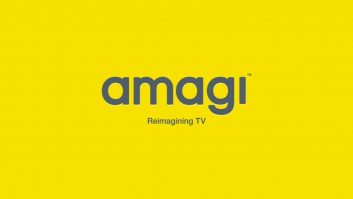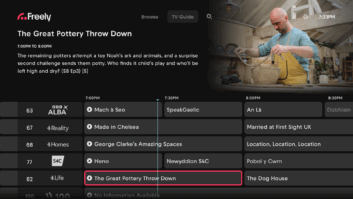Rewind five years and FAST channel would have been a term most linear-minded TV industry folk would – perhaps, after some head scratching – associate with something vaguely along the lines of OTT platforms, SVoD or maybe “to do with YouTube”.
But here in 2022 the reality is that FAST (Free Ad-supported Steaming Television) is the rapidly evolving distribution proposition that’s allowing TV production companies the chance to generate incremental revenue outside of traditional finished tape sales.
The reach of FAST channels is nothing short of colossal: they are available via several major connected TVs, supported devices and platforms. By way of example in 2021 Banijay Rights doubled its FAST channels hours of viewing year-on-year, while our channels portfolio exceeded over 50 million hours of viewing combined. Of course (and while I would say this) this really does make us one of the leaders in the field across the international production business.

Unsurprisingly, it’s now widely recognised that the territory with the largest number of FAST channel reach and monetisation potential is the United States. It’s a maturing market, with a broad, connected TV footprint with strong advertising CPMs (cost per mille, the price an advertiser would pay per 1,000 ad impressions). The wider picture is that last year new research from nScreenMedia predicted that by 2023, ad revenue will reach up to $4.1 billion in this territory alone. It’s a huge figure. For comparison, outside of the US, FAST Channel opportunities are growing considerably in markets such as the UK and Germany while the rest of Europe and world is still in early – yet developing – stages.
All this goes some way to explain why so many media firms are now flocking to the FAST channel space as quickly as possible – please excuse the pun.
But what are the specific benefits for producers and distributors working in this arena? Below I’ve listed four:
- Drawing back the curtain slightly, FAST channels are a good way of further monetising back catalogue titles that are perhaps in third or fourth window relicenses. To put it bluntly, it’s an effective way of keeping the shelf life of a TV show going, with these channels reaching out to an audience that may not be watching traditional linear TV. Plus, they can be launched outside of a production territory – if rights allow.
- Fast channels are always solely curated either around IP, genre, or brand, meaning there is a certain amount of control the programmer can insert. But importantly, this means the channel will need to have recognisable content that already has market awareness and offer a lean back viewing experience that has content volume. A good base point would be to build a channel on 100 to 150 hours of curated content, which – for a major producer-distributor like Banijay – isn’t a problem. Outside of launching FAST channels, most of the connected TV platforms also have budget to license titles for their owned and operated channels. Thus, if there is not enough content to build an effective FAST offering, there could be an alternative avenue down the owned and operated channel route.
- Most commercial deals are non-exclusive with FAST channels, allowing them to be syndicated across several platforms at the same time. This helps widen the reach and monetisation scalability of each channel launch. And is a big plus for producers.
- Traditional licensors usually contract and upfront on a fixed-fee basis. Many FAST channel commercial models don’t offer upfront payment, but instead a monthly waterfall and revenue driven by the number of views and advertising sell through rate on a channel. Of course, this means no guarantee of income, but the upside is there is no ceiling either. That said, some FAST channel platforms might offer advertising inventory split commercial models allowing TV production firms the ability to sell a portion of the advertising inventory on the channel. And if the prodco has a strong sales team in place, then all the better – it gives them the opportunity to control a share of the advertising and further potential for more commercial opportunity.
The benefits are there to be seen, but are FAST channels easy to set up technologically?
Interestingly, in most cases, FAST channels would need to be set up using a third-party facilitator that acts as a gateway between the TV production company and the connected TV platform. Facilitators can provide several services including FAST channel playout and advertising inventory selling, while also offering full-service options including channel programming and scheduling.
However, TV production firms would still have to digitally deliver content to the facilitator in an agreed technical specification, so there is a need for prodcos to have the infrastructure to deliver content in this way.
Should a TV production firm look to programme the FAST Channels in-house, then there will need to be a channel management team who can ensure schedules are continuously programmed and curated effectively using the facilitator scheduling tools. Most facilitator scheduling tools have automation features which helps with programming scalability.
In several cases, TV production firms will wear the cost of the third-party facilitator services so before launching FAST channels it is key to understand the market and the scope of the opportunity first.
Without a doubt, FAST channels are here to stay and if I was to predict how things stand in the next five years….it will be that viewers will be spoilt for choice with even more premium FAST channels to sit back and enjoy. Reach and advertising sell-through rates will only increase in existing and new FAST channel territories, keeping this “new” revenue stream in the forefront of distribution strategies.







